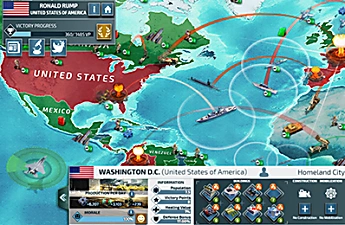
BELFAST -
During the worst of the Troubles, this wedge of north Belfast was "Murder Mile", a neighbourhood which crystalized the Northern Ireland conflict pitting Catholic nationalists against Protestant loyalists.
It is in the heart of the scarred district that Irish Foreign Minister Simon Coveney sits in a community centre, warning in measured terms that the fallout of Britain's leaving the EU is not only about trade and saving the economy.
Brexit is also about keeping the peace, a peace that cannot yet be taken for granted two decades after the Good Friday agreement erased the border between British-ruled Northern Ireland and the Republic of Ireland.
"We have tried to not turn this into a unionist versus nationalist issue," Coveney told a small group of international journalists, referring to the factions that ripped the island of Ireland apart for generations and led to more than 3,500 deaths.
But Northern Ireland "is not the same as the rest of Britain, and anybody who pretends it is, is misleading people," he said.
It was not supposed to be this way. After Britain voted for Brexit in June 2016, all sides quickly agreed that the reconciliation process was sacrosanct.
Key to this was the Irish border, which since the Good Friday accords is largely invisible, identifiable only by a subtle change in traffic signs and the transition between kilometres and miles.
But 18 months after the referendum, and just two weeks before a EU summit that could determine the future of Ireland's relations with Britain, Dublin is quietly but firmly putting on the table Brexit's implicit threat to the peace process, through the risk of a return of a so-called hard border.
"Nobody should underestimate the strength of feeling in the Irish government on this border issue," Coveney said.
- 'Inconceivable' -
Coveney's presence in Belfast was the final act of a 36-hour media tour discreetly organised by Ireland's foreign ministry.
Criss-crossing the frontier, the message of the trip was that reinstating any kind of border would bring unfathomable discord to Europe's western edge.
"In my family, we cross the border seven or eight times a day," said John Kelpie, chief executive of the Derry and Strabane District Council, a region in Northern Ireland that hugs the border.
"It is absolutely inconceivable that they could continue with a physical impediment to going back and forth."
Reconciliation has worked wonders in this long underdeveloped nook of the Irish island, with multinationals such as DuPont and the computer hard-drive maker Seagate bringing benefits to both sides.
But the links are relatively new. One stop on the trip was the modern North West Cancer Centre, part of the main hospital in Derry that treats patients on both sides of the border.
Opened in February, the £66 million ($88 million, 74 million euros) facility was paid for by both governments, a rare joint initiative, even since the implementation of the peace deal.
The hospital serves Derry, or Londonderry as it is known to UK loyalists, the city which was the scene of the "Bloody Sunday" of 1972, when British soldiers shot and killed 14 civilians during a civil rights protest.
A majority catholic city in Northern Ireland, Derry today has a "Peace Ridge" crossing the Foyle river and embraces reconciliation, as difficult as it may be.
In the city's Bogside district, a stop is made at the Museum of Free Derry, financed by Ireland, Britain and the EU, which recounts Bloody Sunday in detail. Political murals, freshly repainted, still adorn the neighbourhood walls.
- 'Green and orange' -
Further south, Gabriel D'Arcy, a former Irish soldier who once patrolled the flashpoint border, now goes to work in Northern Ireland as chief executive of the cross-border dairy giant LacPatrick.
"In 1973, Ireland and the UK both joined the EU and the customs posts disappeared, but unfortunately they were replaced by military posts," D'Arcy said.
"A lot of roads were closed, a lot of bridges blown up and of course, both north and south of the border, there was no economy other than an illegal economy."
But during the visit, flags from the Ulster Volunteer Force, a loyalist militia, could be seen flying from the lamp posts opposite the plant.
"Word gets out when we have a visit from delegations like yourselves," D'Arcy said.
At a dinner in Derry, Denis Bradley, a former priest, brashly said out loud what others had only hinted at.
Bradley once held a sensitive role in the peace process, helping oversee reform of Northern Ireland policing.
"Everything that happens in Ireland is Green and Orange," said Bradley, referring to the traditional colours of the nationalists and unionists.
No one at the table slowed down Bradley, a guest of Ireland's foreign ministry, as he conveyed his message.
"There is never, ever, going to be a border in Ireland again, it is not up for negotiation," he said.
"You can put a border wherever you want, but it's not going here."



![[Gallery] Former Marine Leaves Navy Stunned With Revelation [Gallery] Former Marine Leaves Navy Stunned With Revelation](http://images.outbrain.com/transform/v2/eyJpdSI6IjdhNWU0MTEwZjQ3NTFkMTNhMzNjYTVjOTJhZmQxNzEyNzk2NWMyNjFmZWE2MTgyMTUzYmU3ZjVhMjU1OTJiNWYiLCJ3IjoyMzAsImgiOjE1MCwiZCI6MS41LCJjcyI6MCwiZiI6MH0.webp)
No comments:
Post a Comment